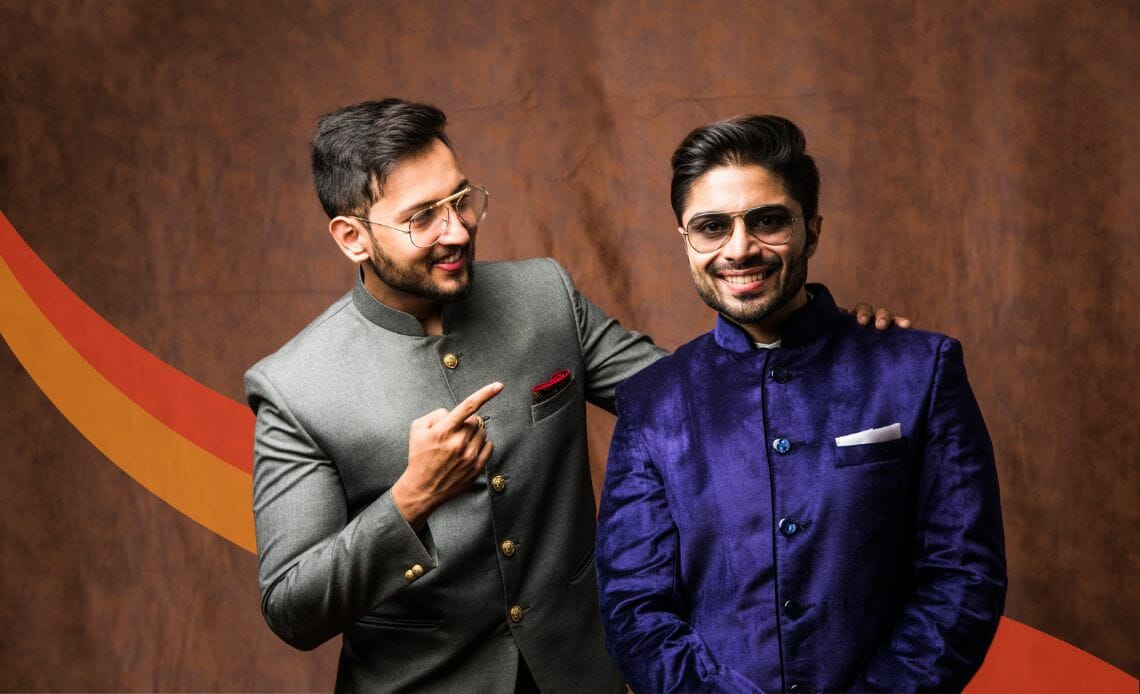
Every once in a blue moon, a trend sweeps through the fashion world that’s a breath of fresh air. Right now, it’s all about “Kurta Kouture: How Designers are Revolutionizing Traditional Indian Fashion.” This isn’t just another fashion trend; it’s a full-blown revolution, a shift from the old to the new, breathing life into age-old traditions.
Table of Contents
The Rebirth of Kurta
Kurta’s journey from simplicity to sophistication is nothing short of extraordinary. Designers infuse modern aesthetics into this traditional attire, creating a perfect blend of old and new. It’s no longer just about the thread count or the type of fabric. It’s about weaving a story through the garment that resonates with the wearer’s individuality.
Modern Takes on Classic Styles
The modern Kurta is not just a garment; it’s a statement. Designers are breaking away from the traditional mold, experimenting with cuts, colors, and embellishments. They use fabrics like silk, velvet, and organza, adding bold prints and intricate embroidery, making each Kurta a unique piece of art.
Influential Designers in the Kurta Revolution
The Kurta revolution wouldn’t have been possible without the vision and creativity of a few influential designers. They’re the ones who dared to dream, push boundaries, and disrupt the status quo. Let’s take a look at some of these trailblazers.
Sabyasachi Mukherjee
Sabyasachi Mukherjee is a name that needs no introduction in Indian fashion. His designs are a testament to his understanding of Indian culture and his unique ability to merge tradition with modernity. His Kurtas blend elegance and flamboyance, filled with vibrant colors and intricate patterns.
Anita Dongre
Anita Dongre is known for her sustainable fashion. Her designs blend simplicity and sophistication, and her Kurtas are no exception. She employs local artisans who use traditional methods to create stunning designs, promoting local craftsmanship while revolutionizing Kurta Kouture.
The Impact of Kurta Kouture
Kurta Kouture: How Designers are Revolutionizing Traditional Indian Fashion has had a ripple effect on various aspects of society. It’s not just a fashion trend; it’s a catalyst for change.
Economic Impact
With Kurta Kouture gaining popularity, the demand for local artisans has increased. This has provided a much-needed boost to the local economy, creating jobs and improving livelihoods.
Cultural Impact
Kurta Kouture has created a bridge between the old and the new. It has made traditional Indian attire trendy again, preserving cultural heritage while making it relevant to the modern world.
The Future of Kurta Kouture
The future of Kurta Kouture looks promising. As designers continue pushing boundaries and experimenting with new designs, we expect to see more exciting innovations.
Emerging Trends
From asymmetrical designs to digital prints, emerging trends add a new dimension to Kurta Kouture. The focus is on creating unique, personalized experiences, pushing the envelope of what traditional attire can be.
Sustainability in Kurta Kouture
The fashion industry is becoming increasingly aware of its environmental footprint, and Kurta Kouture is no exception. Designers are using eco-friendly materials and promoting sustainable practices, ensuring the Kurta revolution doesn’t come at the planet’s expense.
FAQa
What is Kurta Kouture?
Kurta Kouture is the modern interpretation of the traditional Indian Kurta. It involves infusing contemporary design elements into the classic Kurta, creating a fusion of tradition and innovation.
How are designers revolutionizing traditional Indian fashion through Kurta Kouture?
Designers are revolutionizing traditional Indian fashion by introducing modern aesthetics to the traditional Kurta. They are experimenting with cuts, colors, and embellishments, turning each Kurta into a unique piece of art.
Who are some influential designers in the Kurta revolution?
Some influential designers in the Kurta revolution include Sabyasachi Mukherjee, known for his vibrant and striking designs, and Anita Dongre, renowned for her sustainable fashion practices.
What impact has Kurta Kouture had on society?
Kurta Kouture has had both economic and cultural impacts. Economically, it has boosted the local economy by increasing the demand for local artisans. Culturally, it has made traditional Indian attire trendy again, preserving cultural heritage while making it relevant to the modern world.
What are some emerging trends in Kurta Kouture?
Emerging trends in Kurta Kouture include asymmetrical designs, digital prints, and an increased focus on sustainability. Designers continually experiment with new ideas, pushing the boundaries of traditional attire.
What is the future of Kurta Kouture?
The future of Kurta Kouture looks promising. With designers pushing boundaries and experimenting with new designs, we expect to see more exciting innovations. There is also a growing focus on sustainability, with designers using eco-friendly materials and promoting sustainable practices.
Conclusion
Kurta Kouture: How Designers are Revolutionizing Traditional Indian Fashion is a testament to the power of creativity and innovation. It’s a celebration of tradition, a nod to the past, but with an eye on the future. It’s about preserving cultural heritage while embracing change. This isn’t just a fashion trend; it’s a revolution, a paradigm shift redefining what traditional Indian attire can be. As we stand on the cusp of this exciting new era, one thing is clear: the future of Indian fashion looks brighter than ever.
Also Read: Jorts: The Secret to Effortlessly Cool and Comfortable Summer Style


1 Comment